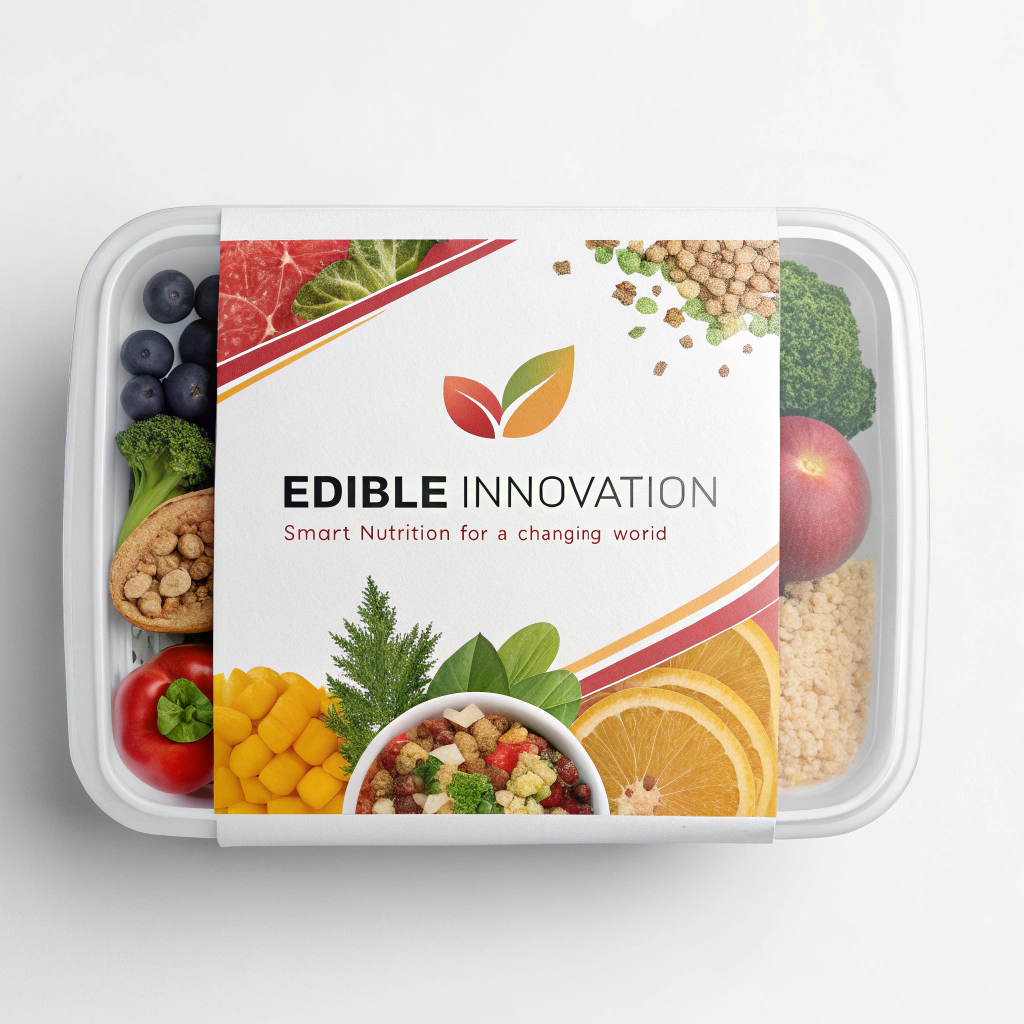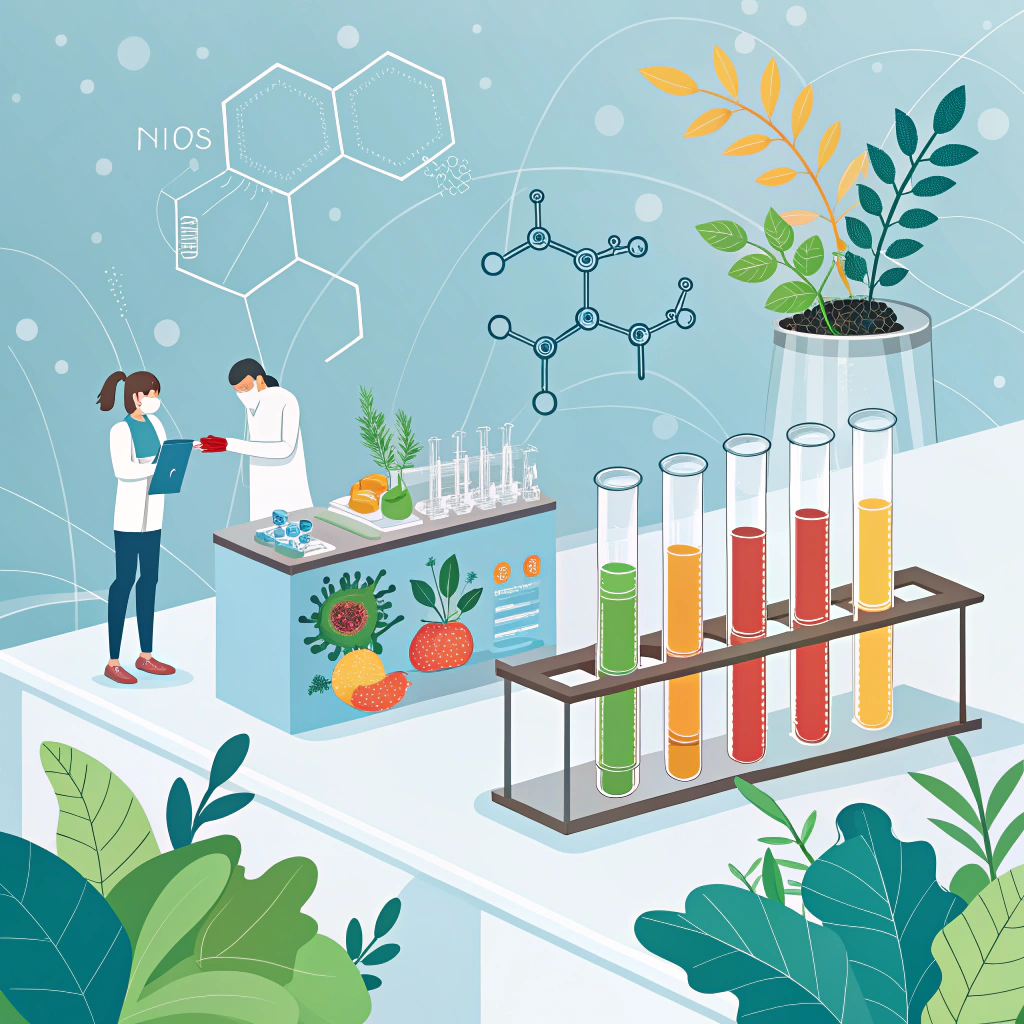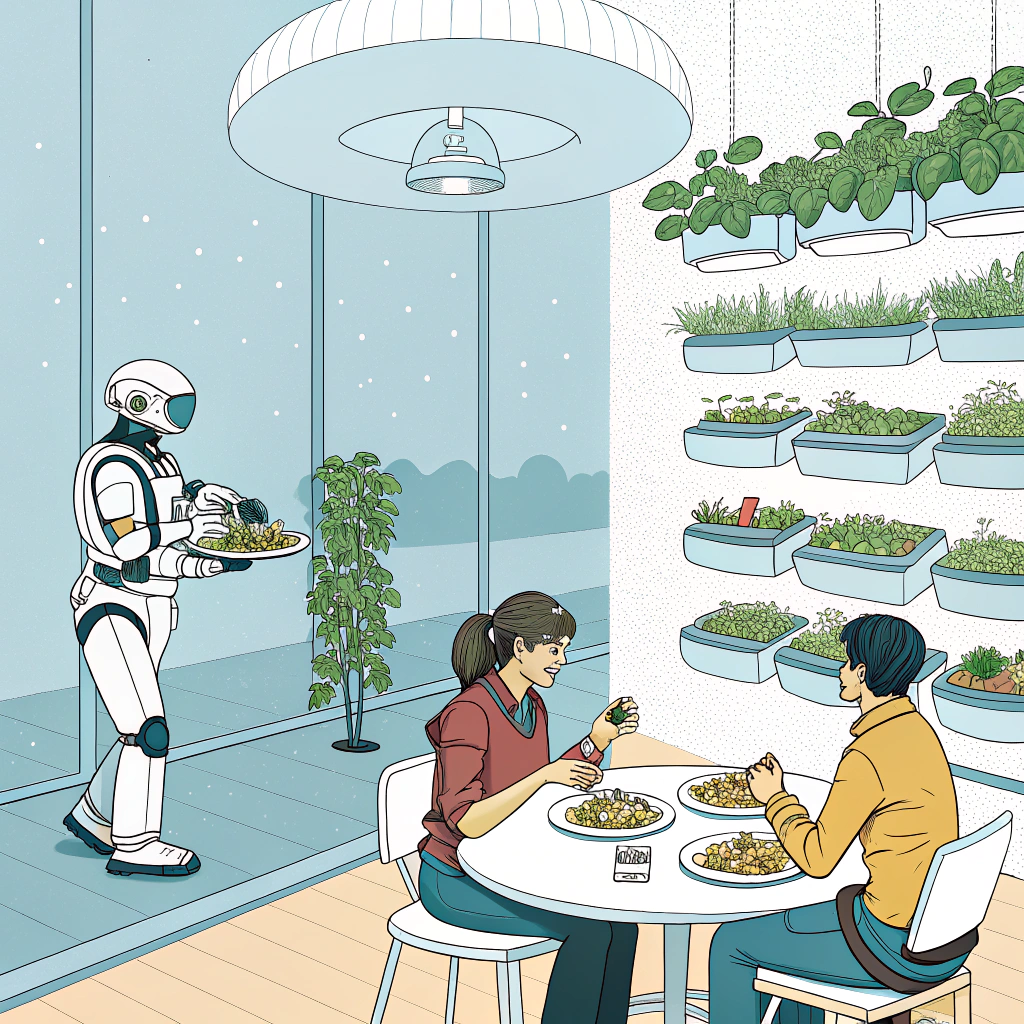Edible Innovation: Smart Nutrition for a Changing World
Introduction
In a world of increasing complexity—where global health challenges, climate change, population growth, and technological transformation intersect—the way we nourish ourselves is evolving. Our food system is no longer just about calories and taste; it’s becoming a sophisticated network that integrates data science, biotechnology, sustainability, and personalization. This is the era of smart nutrition—an emerging frontier of edible innovation that aims to optimize health, improve food equity, and transform the global food landscape.
From personalized meal planning using artificial intelligence to lab-engineered foods tailored to genetic profiles, smart nutrition is reimagining what it means to eat well. This article explores the science, trends, technologies, and implications of this exciting movement—shedding light on how edible innovation is shaping the future of food in a changing world.

1. What Is Smart Nutrition?
Smart nutrition refers to the science-driven, tech-enhanced approach to food that uses data, biotechnology, and personalized insights to optimize dietary choices. It emphasizes precision, efficiency, and adaptability in how we produce, select, and consume food.
Key components include:
- Personalized nutrition: Tailoring diets based on genetics, microbiome, biomarkers, and lifestyle.
- Functional foods: Foods enhanced with health-promoting additives like probiotics, nootropics, or adaptogens.
- Digital nutrition platforms: Apps and devices that track diet, provide feedback, and recommend changes.
- Lab-grown and engineered foods: Nutritionally optimized products developed through food science and biotechnology.
This approach aims not only to promote health but also to address planetary concerns such as resource depletion, food waste, and dietary-related diseases.
2. The Urgency Behind Innovation
Global Health Crisis
More than 2 billion people worldwide suffer from micronutrient deficiencies, while over 1.9 billion adults are overweight or obese. Chronic diseases like diabetes, heart disease, and cancer—often diet-related—are the leading causes of death globally.
Traditional dietary guidelines often fail to address individual variability. Smart nutrition offers a targeted approach to prevent, manage, and even reverse these conditions.
Climate and Food Security Pressures
Feeding nearly 10 billion people by 2050 will require a food system that is both resilient and regenerative. Smart nutrition aligns with environmental goals by:
- Encouraging plant-rich, low-carbon diets
- Reducing reliance on resource-intensive agriculture
- Enabling alternative protein sources and efficient food production systems
3. Personalized Nutrition: Food Meets Data
Genomics and Nutrigenomics
Personalized nutrition begins with understanding how our genes affect dietary needs. Nutrigenomics explores how individual genetic variations influence metabolism, nutrient absorption, and disease risk.
For example, some people metabolize caffeine faster due to a variation in the CYP1A2 gene, while others may have a genetic predisposition to high cholesterol. Genetic testing kits (e.g., 23andMe, DNAfit, Nutrigenomix) help individuals understand how to tailor their diets based on genetic insights.
Microbiome Mapping
Our gut microbiome—the trillions of bacteria in our intestines—plays a critical role in digestion, immunity, and even mood. Smart nutrition platforms like ZOE and Viome analyze gut microbiota through stool samples and recommend personalized diets that improve microbial health and metabolic response.
Wearables and Real-Time Biometrics
Devices like continuous glucose monitors (CGMs), smartwatches, and fitness trackers now offer real-time data on blood sugar, activity, heart rate, and sleep. Platforms like Levels Health and Lumen use this data to provide feedback on how specific foods affect your body—leading to better choices and metabolic optimization.
4. Functional Foods and Bioactive Compounds
Definition and Purpose
Functional foods go beyond basic nutrition—they deliver targeted health benefits. These include:
- Probiotics: Improve gut health
- Omega-3s: Support brain and heart function
- Adaptogens: Help manage stress (e.g., ashwagandha, ginseng)
- Nootropics: Enhance cognitive performance (e.g., L-theanine, lion’s mane)
Examples in Action
- Golden milk: A turmeric-based beverage known for anti-inflammatory properties
- Smart drinks: Beverages enhanced with nootropics, vitamins, or CBD
- Protein bars with AI-designed macronutrient ratios for specific fitness goals
These products are being increasingly personalized and integrated into daily routines.
5. AI and Digital Platforms: Your Nutrition Assistant
Smart Apps and Meal Planners
Apps like MyFitnessPal, Yazio, and Cronometer have evolved from simple calorie counters to intelligent systems that analyze nutrient intake, suggest meals, and connect with wearables.
AI-powered apps now provide:
- Meal suggestions based on biometrics, weather, and activity
- Grocery delivery integration
- Real-time feedback on nutritional gaps
Chatbots and Virtual Dietitians
AI chatbots trained in nutritional science are helping users navigate food choices with 24/7 guidance. They can answer questions like:
- “What should I eat after a workout?”
- “Is this meal balanced for someone with prediabetes?”
- “How can I get more iron as a vegetarian?”
As AI grows more sophisticated, virtual dietitians will rival human professionals in accessibility and personalization.
6. Alternative Proteins and Nutrient Engineering

Lab-Grown and Plant-Based Proteins
Alternative proteins are central to smart nutrition, offering healthier and more sustainable options.
- Plant-based: Pea, soy, lentil, and mushroom proteins (e.g., Beyond Meat, Impossible Foods)
- Cultivated meat: Grown from animal cells, real meat with reduced environmental impact (e.g., Upside Foods)
- Fermented proteins: Produced using microbes to replicate dairy, egg, or meat proteins (e.g., Perfect Day, Nature’s Fynd)
These innovations allow for greater control over nutrition profiles—more protein, less fat, better amino acid balance.
Nutrient Fortification and Bioengineering
Some foods are being engineered for enhanced nutrition:
- Golden rice: Genetically modified to produce vitamin A
- Biofortified beans and maize: Enriched with iron and zinc
- Custom multinutrient mixes: Designed for populations with specific deficiencies
Smart fortification addresses malnutrition while keeping food accessible and familiar.
7. Sustainable and Ethical Eating Through Technology
Smart nutrition goes hand-in-hand with eco-conscious eating. With the help of data and transparency tools, consumers can make informed decisions aligned with their values.
Blockchain and Supply Chain Transparency
Blockchain technology tracks food from farm to fork, verifying claims like “organic,” “fair trade,” or “regeneratively grown.” Apps like Provenance and IBM Food Trust let users scan QR codes to see the entire supply chain of a product.
Eco-Labels and Carbon Footprint Tracking
Platforms like Yuka and Klimato rate foods based on their environmental impact. Carbon labeling on packages is also on the rise, helping consumers reduce their dietary carbon footprint.
8. Nutrition for All: Accessibility and Global Health
Combatting Global Malnutrition
Smart nutrition isn’t only for wealthy consumers. Scalable innovations are addressing malnutrition in low-resource regions:
- Ready-to-use therapeutic foods (RUTFs) fortified with essential nutrients
- AI-driven agriculture to grow more nutrient-dense crops
- Mobile nutrition apps for rural healthcare workers to assess and guide child nutrition
Food Equity and Inclusion
Smart nutrition must address systemic inequalities. Solutions include:
- Community-based nutrition data collection
- Culturally sensitive dietary tools
- Government and NGO partnerships to deliver tech-enhanced nutrition in underserved areas
9. Ethical, Cultural, and Social Considerations
Data Privacy and Ownership
With smart nutrition comes a flood of personal health data. Questions arise:
- Who owns your DNA and microbiome data?
- How is it protected?
- Will insurance companies use it to discriminate?
Strong regulations and ethical frameworks are needed to protect user rights.
Cultural Relevance and Acceptance
Nutrition is deeply tied to identity and tradition. Smart nutrition must respect cultural dietary patterns while offering innovation. Solutions should enhance—not erase—traditional food knowledge.
10. The Future of Eating: A Vision for 2040
Imagine your morning in 2040:
- You wake up, and your wearable suggests a breakfast optimized for your sleep quality, stress levels, and hormonal cycle.
- A smart kitchen appliance prepares a smoothie infused with custom micronutrients and probiotics tailored to your gut microbiome.
- Lunch is delivered by a drone, based on your glucose levels and afternoon workload.
- A digital assistant gently nudges you to hydrate and stretch after you’ve been sitting too long.
This isn’t a dystopia—it’s a nutritionally optimized lifestyle, powered by technology but grounded in wellness, sustainability, and informed choice.

Conclusion
Smart nutrition is no longer just a trend—it’s a paradigm shift. In a world grappling with chronic illness, climate change, and inequity, edible innovation offers real solutions that are scalable, ethical, and deeply personal.

